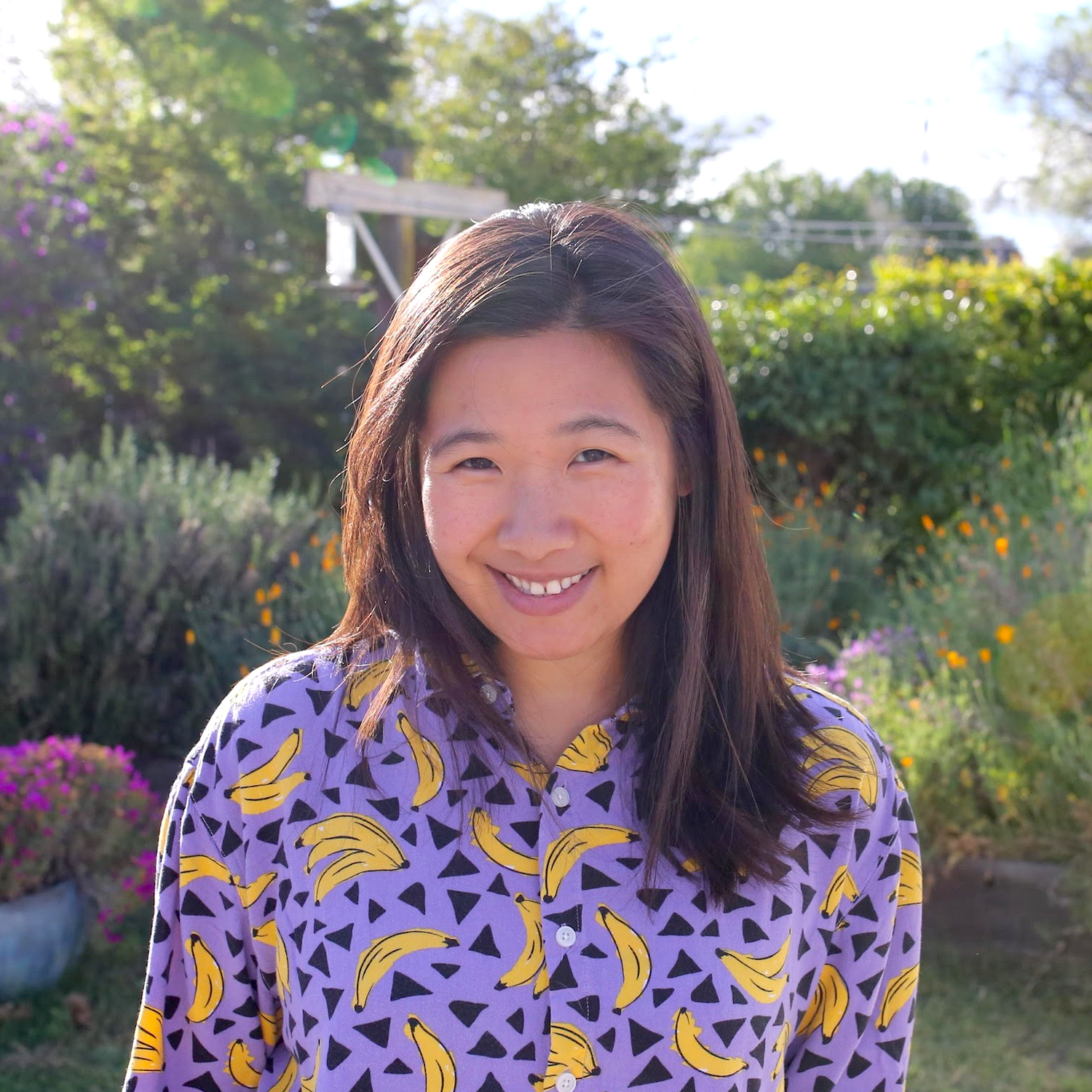 Growing up in San Jose, Jillian Hiu heard about Berkeley Lab. Now, she’s part of the research mission here, working on components for the QERLIN beamline. Find out how she combines science and art, and how her pet surprised her.
Growing up in San Jose, Jillian Hiu heard about Berkeley Lab. Now, she’s part of the research mission here, working on components for the QERLIN beamline. Find out how she combines science and art, and how her pet surprised her.
What does your job involve?
My job is considered a designer position. As a designer, I do a lot of CAD work, which is really fun because I like making sure I can design something that will be manufacturable and function well. I am also learning to run some of the simulations to figure out if a heat load is applied on a part somewhere, if it’s strong enough or if it’ll fail. The simulations help me figure out if I need to make a geometry or material change, or make something stronger. I’m working on a beamline mask, and I want to know how much energy that mask will absorb, and if it’ll get to a point where it melts. (It won’t!) We’re well below that threshold, but we’re running a thermal simulation to make sure we’re in a safe zone.
Right now, the project I’m working on is for the QERLIN beamline, mostly beamline components. I also help out with purchasing my parts and making sure that they come in on time, and the management of the project itself.
What path led you here?
I did both my undergrad degree in mechanical engineering as well as a master’s in engineering and really enjoyed the design work that goes along with it. For a long time. I wanted to use those skills to work in biotech and biomed, but the pace of it did not work for me. I ultimately was drawn to this position because I wanted to find an opportunity to work for a research institute. I grew up in San Jose, so I knew about Berkeley Lab, and I think the Lab does a lot of really great science and contributes to a lot of research that is publicly available to so many institutions. Those are really great results that can come out of a public research institution, sharing the wealth of knowledge in science.
The job that I had before this was working with a COVID diagnostic device. And so, it was really cool during my interview to walk around the ring and see an article about how one of the beamlines was used to image the spike protein of COVID. I like being able to see that research connect to things that are happening in the world.
How did you become interested in mechanical engineering?
Like I mentioned, I really like the design work. My concentration when I was in university was in design and design manufacturability, and favoring the manufacturing side of things. That’s a whole beast in itself, making sure you can design something that will actually be manufacturable.
Part of that interest has to do with my own interests right now and as a child of working with my hands, doing lots of crafts. Actually, I just started doing pottery in January.
It’s a really cool hobby because there’s also a lot of science that goes into it. A lot of experience that you have to have, a lot of experimentation that you have to do to figure out what works best for you as the potter. If your hands are the tools, do you want your material—the clay—to be wetter? Drier? When it gets to glazing, what temperatures to fire at, what kind of glazes you can mix together to come up with the end product you want.
I’m both hand building and throwing, and enjoying the hand building better because it’s a closer connection of hand to clay. With throwing, I get easily frustrated because there’s a rotational element going on. It’s funny, because I don’t know if it’s out of spite, but I want to get better at throwing because it’s a fun challenge to tackle.
What are some of your other hobbies?
Growing up in California, I really enjoy hiking. I think that’s a go-to activity for most people, and as I got older I got really into wine tasting—another staple California hobby. My husband and I are actually members at a winery in Livermore.
It’s not quite a hobby, but I have a dog. We think he’s half husky, half Akita, and we adopted him at about the age of three, so we thought we were in store for a much more active dog, but he is very lazy and does not enjoy the same hobbies that my husband and I do, including the hiking and wine tasting. It does require me to manage my time carefully because I take public transit up here and I live all the way down in San Jose, but luckily, because he is more of a couch potato, it works out for my schedule and works out for him.
Which inclusion, diversity, equity, and accountability (IDEA) efforts are you involved in?
A group of us have a Women in Engineering coffee and tea time once a month. It’s a great time to take a break from the computer, network, and meet other people in engineering. It’s not just open to women. It’s open to women and allies. I started working at the Lab post-COVID, and as we’re trying to figure out this new normal, it has been kind of difficult to meet people on campus, so I’m glad that they have these social groups.
What else would you like to share with the ALS community?
I’m happy to be here. I think that the team science really shows through, and everybody I’ve worked with so far has been very helpful.